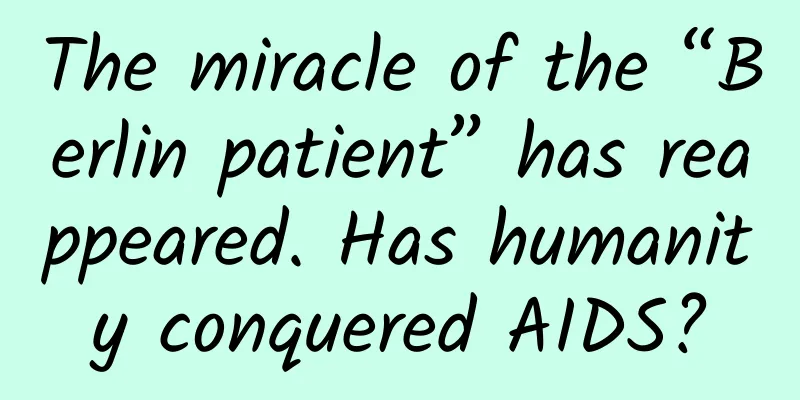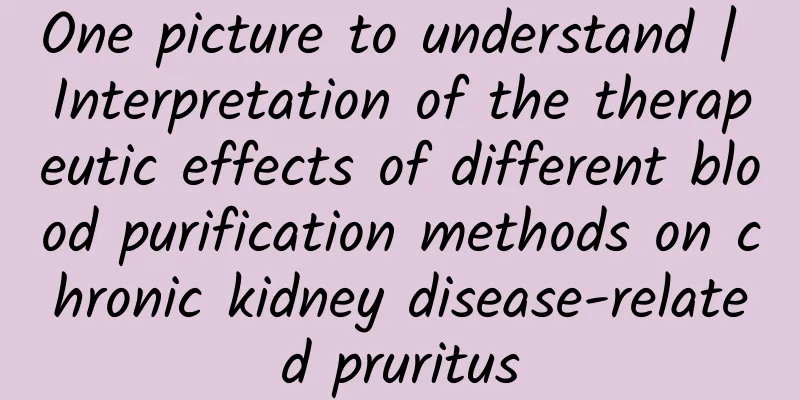The miracle of the “Berlin patient” has reappeared. Has humanity conquered AIDS?

|
On March 10, 2020, an article published in the famous medical journal The Lancet HIV announced that an HIV carrier remained healthy 30 months after stopping medication, becoming the second person in the world to be cured of AIDS. He is also known as the "London patient." Adam Castillejo, the "London Patient", Image source: Andrew Testa for The New York Times “Once infected, you have to take medicine for life”, why is HIV so difficult to eradicate? AIDS is arguably the biggest nightmare in human public health in the 20th century. Since the US Centers for Disease Control and Prevention reported the world's first case of HIV infection in 1981, nearly 40 million people have died from the disease. Compared with the droplet, contact and even aerosol transmission routes of coronavirus and influenza virus, HIV, which can only be transmitted through blood, mother-to-child and sexual contact, does not seem to be able to cause trouble. However, the current situation is that the medical community has been fighting this cunning virus for nearly 40 years and has barely achieved a draw: the existing medical means can only use drugs to suppress the virus in HIV-infected people to a low level, keeping the carriers in a non-symptomatic and non-infectious state. Currently, there are still nearly 40 million HIV carriers in the world. Even if their life expectancy is no different from that of normal people with drug intervention, there is currently no way to completely eliminate the HIV virus in the patient's body, which means that a cure in the medical sense is still a long way off. Why is AIDS difficult to treat? We need to first understand how HIV attacks the human body. Any virus that wants to enter a cell to engage in destructive activities must have a corresponding protein that can bind to the cell surface molecules. Figuratively speaking, it is like holding a "key" that can open the "lock" on the cell surface to enter the cell. This also explains why the human body has different symptoms when infected by different viruses. For example, cold viruses easily infect respiratory epithelial cells and often cause respiratory symptoms, while rabies viruses attack nerve cells and cause brain damage, etc. HIV infects human cells through a glycoprotein molecule called CD4. CD4 molecules mostly appear on the surface of helper T (Th) cells, which are a very important part of the human immune system. They can promote the activation of killer T cells and B cells by secreting cytokines and other means, and guide the immune system to eliminate pathogens. When HIV first infects the human body, the immune system can resist it. However, the insidious thing about HIV is that the Th cells infected by it will be cleared by the killer T cells, which in turn weakens the immune response. This vicious cycle not only makes the immune system unable to clear HIV, but also unable to resist the invasion of other pathogens. Eventually, the immune system of the infected person will be completely destroyed, and most AIDS patients will die from complications caused by other infections. CD4 molecular structure on the surface of Th cells, source: public domain In addition to the insidiousness of attacking the human immune system, HIV, as an RNA virus, can also convert its own genetic material into DNA and insert it into the human genome. When humans use drugs to inhibit the synthesis of the virus, HIV hides in the genome of the cell under an assumed name. Once the drugs are withdrawn, HIV will revive and re-synthesize viral particles to continue infecting healthy cells. This is why, although we have developed drugs to inhibit HIV, it is still "once infected, you have to take medicine for life." Who was the first person to be cured of AIDS? AIDS has infected humans for nearly 40 years, and only one patient has been completely cured. He is the miracle "Berlin Patient". How was the first case of AIDS cured? Research on the treatment of AIDS has been difficult, and a breakthrough came when researchers discovered that HIV not only needs CD4 to infect cells, but also another molecule on the cell surface as an aid, most of the time it is CCR5, and a few times it is CXCR4 or other molecules. In other words, if HIV wants to invade the immune system, it must bind to both CD4 and CCR5 on the surface of immune cells. An immune system without CD4 molecules does not exist, but CCR5 is not essential for the human body. Some people with CCR5 mutations (no CCR5 molecules on the surface of immune cells) can still live normally. In fact, homozygotes carrying two CCR5 mutation genes are innately immune to AIDS (caused by R5 HIV), but only 1% of people of Northern European descent are homozygous for CCR5 mutation genes. In addition, about 10% of people of European descent carry one CCR5 mutation gene (heterozygote). These people are not completely immune to R5 HIV, but are relatively less susceptible. The process of HIV-1 virus entering immune cells through CD4 and CCR5, source: public domain Researchers speculate that if the immune system is modified into a version without CCR5, the HIV virus may lose the "target" it relies on, thereby achieving the goal of immune regeneration and expelling the HIV virus. However, this modification can only be achieved through bone marrow transplantation, which is extremely risky and it is unknown whether it is really effective. For the above reasons, related research has not gained widespread influence until the appearance of the Berlin patient, Timothy Brown. Timothy Brown was infected with HIV as early as 1995, and he has been taking medication for treatment since then. However, in 2006, he was diagnosed with acute myeloid leukemia and his life was in danger. Hematologist Giro Huth was Timothy Brown's leukemia attending physician, and he himself was not an AIDS expert. At that time, the only way to save Brown's life was to perform a bone marrow transplant as soon as possible. While preparing for the operation, Dr. Huth had a sudden idea that if a bone marrow donor carrying the CCR5 mutant gene could be found, there would be hope to transform the patient's immune system while performing a bone marrow transplant, thereby verifying the effectiveness of this treatment. After a difficult search, among the 80 donors whose bone marrow was successfully matched, the 61st was detected to have a homozygous CCR5 mutant gene. Berlin Patient - Timothy Brown, source: Tumblr After the hematopoietic stem cells carrying the mutated CCR5 were transplanted into the Berlin patient, a miracle happened. Just as Dr. Huth expected, the hematopoietic stem cells from the donor's bone marrow successfully developed into an immune system that was immune to HIV, clearing the HIV virus and making the HIV genes integrated into the Berlin patient's own cells dormant forever. The "London patient" was cured using the same method as the Berlin patient With the first cure, doctors were confident that they would repeat the miracle, but for various reasons, the miracle never happened again. We will discuss the reasons in the last part of this article. It was not until March of this year, when the London patient entered the 30th month after stopping medication and there was no rebound of HIV live virus in his body, that doctors could finally announce that he had become the second patient cured of AIDS. The London patient is named Adam Castillejo. He was diagnosed with HIV in 2003 when he was 23 years old. Drug treatment made him no different from a healthy person until he was diagnosed with stage 4 lymphoma in 2011. In order to treat lymphoma, he needed a bone marrow transplant, and fortunately he found a donor with a homozygous CCR5 mutation. In October 2017, 16 months after receiving the bone marrow transplant, he voluntarily stopped HIV drug treatment. In March 2019, 17 months after stopping drug treatment, his doctor announced the news that his HIV infection might be cured. Then in March of this year, after 30 months of stopping medication and no live HIV virus was detected in his body, Castillejo decided to make his identity public and become a "messenger of hope" for other AIDS patients. However, after being cured, not all traces of HIV were erased. Like the Berlin patient, some cells in the London patient still contained HIV gene fragments hidden in the cell nucleus, but these dormant genes were like fossils and could no longer cause trouble. 99% of the immune cells in the London patient came from bone marrow donors with CCR5 mutations, indicating that the bone marrow transplant was very successful and the newly established immune system was also a strong guarantee to prevent HIV recurrence. CCR5 receptor protein on the cell membrane, author: Thomas Splettstoesser There have been two cases of cure. Can this treatment be applied on a large scale? Although there have been two successful cases, treating AIDS through bone marrow transplantation is still an experimental therapy that has not been tested on a large scale. Bone marrow transplantation itself is a very dangerous operation. The test subjects may not survive due to cancer, infection and other reasons. Nowadays, taking drugs can suppress HIV virus and maintain normal life of infected people, taking risks in bone marrow transplantation is not in line with the principle of maximizing the interests of patients. Therefore, the test subjects can only be those patients who are infected with HIV and suffer from terminal blood system cancer like the Berlin patient and the London patient. In addition, since natural CCR5 mutations are extremely rare in the population, it is very difficult for the test subjects mentioned above to find a suitable CCR5 mutant bone marrow donation, which greatly limits the application of this experimental therapy. So why can't hematopoietic stem cells be genetically edited to acquire the CCR5 mutation? Although gene editing technology is now quite mature and has also appeared in some blood cancer treatment programs such as CAR-T, hematopoietic stem cells can hardly be cultured and proliferated in vitro, and they can easily lose their stem cell characteristics and differentiate into other types of cells, thus losing their value for transplantation. Therefore, gene editing of hematopoietic stem cells is still very difficult, and using gene editing to create CCR5 mutations to treat AIDS is currently difficult to achieve. Gene editing art illustration, source: Freepik.com However, science and technology are advancing at a rapid pace, and some of the latest research has given us hope of overcoming difficulties. Although there is still a long way to go from theoretical discovery to clinical application, I believe that in the near future, the nightmare of AIDS will become history. References https://mp.weixin.qq.com/s/KngdehInM8WzGVKVG7ZXxg https://www.nytimes.com/2020/03/09/health/london-patient-hiv-castillejo-takeaways.html "Long-term control of HIV by CCR5 Delta32/Delta32 stem-cell transplantation". The New England Journal of Medicine. 360 (7): 692–98. |
<<: It is too early to completely cure AIDS. Do you understand ART therapy?
Recommend
Tips for curing dysmenorrhea: massage
Today's pace of life is accelerating. Due to ...
Why does the lower right side of my abdomen hurt during pregnancy?
Many people feel pain in the lower abdomen during...
Basis for diagnosis of endometriosis
Nowadays, many female friends are only concerned ...
What happens when women’s fingernails break?
Loving beauty is the nature of every female frien...
International Pharmaceutical News丨Oral inactivated vaccine for urinary tract infection? It’s true, but…
The vaccine to prevent " urinary tract infec...
How many grams of blood is normal for pregnant women
For pregnant women, their blood values are very...
Are all the waiting lists not released? When will the train tickets be released?
After 12306 recently launched the standby functio...
Do you feel like there is a lump of fat down there after giving birth?
Pregnancy and childbirth are processes that every...
The faster the speed, the weirder the behavior? Maybe there is a problem with the coordination function
As you age, do you have this problem: when you re...
Uterine fibroids and uterine fibroids during pregnancy
1. What are uterine fibroids? Uterine fibroids ar...
A small amount of black bleeding before menstruation
Black sesame is a very good health food. It helps...
What is uterine curvature?
Uterine curvature is also called uterine malforma...
What to do if your wife has a cold sex life
It is very important for couples to maintain a re...
How many days of bleeding is normal after hysteroscopy
As we all know, women are prone to some gynecolog...
What are the consequences of strenuous exercise after abortion?
After an abortion, many people start to do some s...









